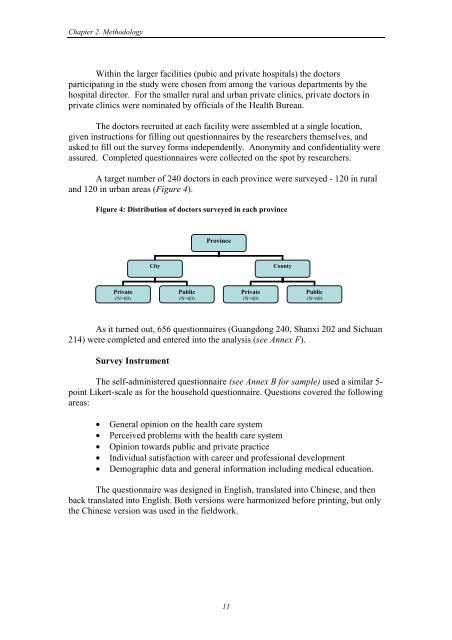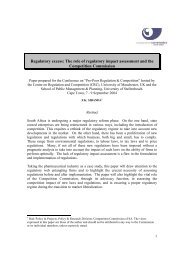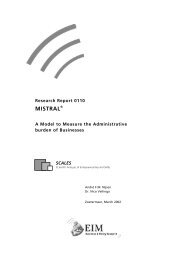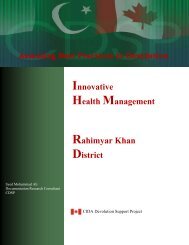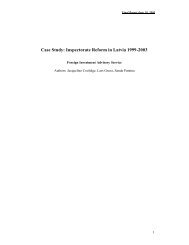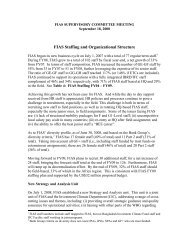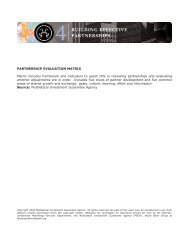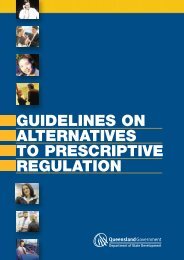The Role and Scope of Private Medical Practice in China
The Role and Scope of Private Medical Practice in China
The Role and Scope of Private Medical Practice in China
You also want an ePaper? Increase the reach of your titles
YUMPU automatically turns print PDFs into web optimized ePapers that Google loves.
Chapter 2. Methodology<br />
With<strong>in</strong> the larger facilities (pubic <strong>and</strong> private hospitals) the doctors<br />
participat<strong>in</strong>g <strong>in</strong> the study were chosen from among the various departments by the<br />
hospital director. For the smaller rural <strong>and</strong> urban private cl<strong>in</strong>ics, private doctors <strong>in</strong><br />
private cl<strong>in</strong>ics were nom<strong>in</strong>ated by <strong>of</strong>ficials <strong>of</strong> the Health Bureau.<br />
<strong>The</strong> doctors recruited at each facility were assembled at a s<strong>in</strong>gle location,<br />
given <strong>in</strong>structions for fill<strong>in</strong>g out questionnaires by the researchers themselves, <strong>and</strong><br />
asked to fill out the survey forms <strong>in</strong>dependently. Anonymity <strong>and</strong> confidentiality were<br />
assured. Completed questionnaires were collected on the spot by researchers.<br />
A target number <strong>of</strong> 240 doctors <strong>in</strong> each prov<strong>in</strong>ce were surveyed - 120 <strong>in</strong> rural<br />
<strong>and</strong> 120 <strong>in</strong> urban areas (Figure 4).<br />
Figure 4: Distribution <strong>of</strong> doctors surveyed <strong>in</strong> each prov<strong>in</strong>ce<br />
Prov<strong>in</strong>ce<br />
City<br />
County<br />
<strong>Private</strong><br />
(N=60)<br />
Public<br />
(N=60)<br />
<strong>Private</strong><br />
(N=60)<br />
Public<br />
(N=60)<br />
As it turned out, 656 questionnaires (Guangdong 240, Shanxi 202 <strong>and</strong> Sichuan<br />
214) were completed <strong>and</strong> entered <strong>in</strong>to the analysis (see Annex F).<br />
Survey Instrument<br />
<strong>The</strong> self-adm<strong>in</strong>istered questionnaire (see Annex B for sample) used a similar 5-<br />
po<strong>in</strong>t Likert-scale as for the household questionnaire. Questions covered the follow<strong>in</strong>g<br />
areas:<br />
• General op<strong>in</strong>ion on the health care system<br />
• Perceived problems with the health care system<br />
• Op<strong>in</strong>ion towards public <strong>and</strong> private practice<br />
• Individual satisfaction with career <strong>and</strong> pr<strong>of</strong>essional development<br />
• Demographic data <strong>and</strong> general <strong>in</strong>formation <strong>in</strong>clud<strong>in</strong>g medical education.<br />
<strong>The</strong> questionnaire was designed <strong>in</strong> English, translated <strong>in</strong>to Ch<strong>in</strong>ese, <strong>and</strong> then<br />
back translated <strong>in</strong>to English. Both versions were harmonized before pr<strong>in</strong>t<strong>in</strong>g, but only<br />
the Ch<strong>in</strong>ese version was used <strong>in</strong> the fieldwork.<br />
11


